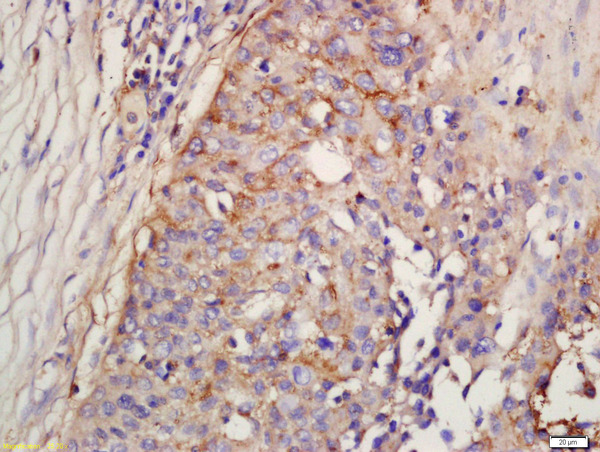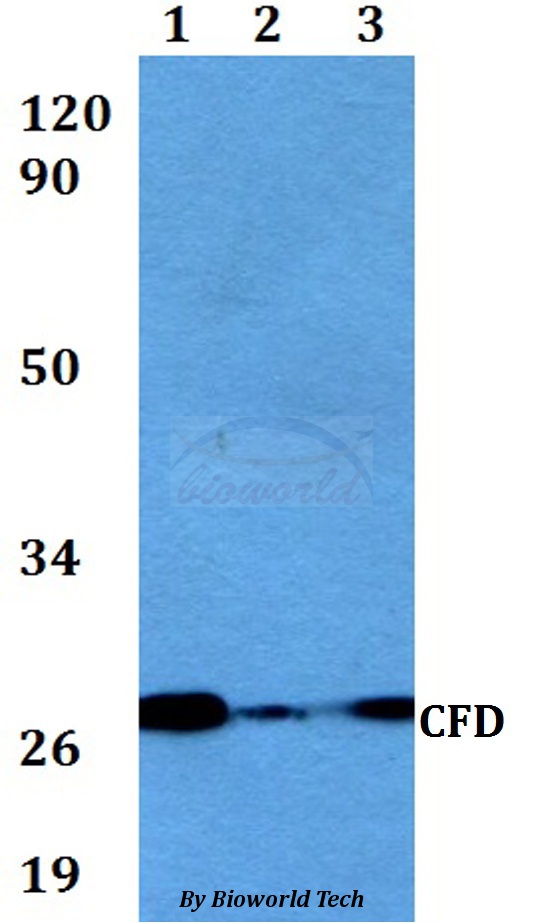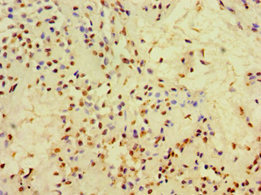
Formalin-fixed and paraffin embedded human lung carcinoma labeled with Rabbit Anti-Factor D/Adipsin Polyclonal Antibody, Unconjugated (bs-13130R) at 1:200 followed by conjugation to the secondary antibody and DAB staining
Factor D Polyclonal Antibody
BS-13130R
ApplicationsImmunoFluorescence, Western Blot, ELISA, ImmunoCytoChemistry, ImmunoHistoChemistry, ImmunoHistoChemistry Frozen, ImmunoHistoChemistry Paraffin
Product group Antibodies
ReactivityHuman, Mouse, Rat
TargetCFD
Overview
- SupplierBioss
- Product NameFactor D Polyclonal Antibody
- Delivery Days Customer16
- ApplicationsImmunoFluorescence, Western Blot, ELISA, ImmunoCytoChemistry, ImmunoHistoChemistry, ImmunoHistoChemistry Frozen, ImmunoHistoChemistry Paraffin
- Applications SupplierWB(1:300-5000), ELISA(1:500-1000), IHC-P(1:200-400), IHC-F(1:100-500), IF(IHC-P)(1:50-200), IF(IHC-F)(1:50-200), IF(ICC)(1:50-200)
- CertificationResearch Use Only
- ClonalityPolyclonal
- Concentration1 ug/ul
- ConjugateUnconjugated
- Gene ID1675
- Target nameCFD
- Target descriptioncomplement factor D
- Target synonymsADIPSIN, ADN, DF, PFD, complement factor D, C3 convertase activator, D component of complement (adipsin), complement factor D preproprotein, properdin factor D
- HostRabbit
- IsotypeIgG
- Protein IDP00746
- Protein NameComplement factor D
- ReactivityHuman, Mouse, Rat
- Storage Instruction-20°C
- UNSPSC12352203
References
- Li H, Wang Q, Dong L, et al. Morusin suppresses breast cancer cell growth in vitro and in vivo through C/EBPβ and PPARγ mediated lipoapoptosis. J Exp Clin Cancer Res. 2015,34:137. doi: 10.1186/s13046-015-0252-4Read this paper





